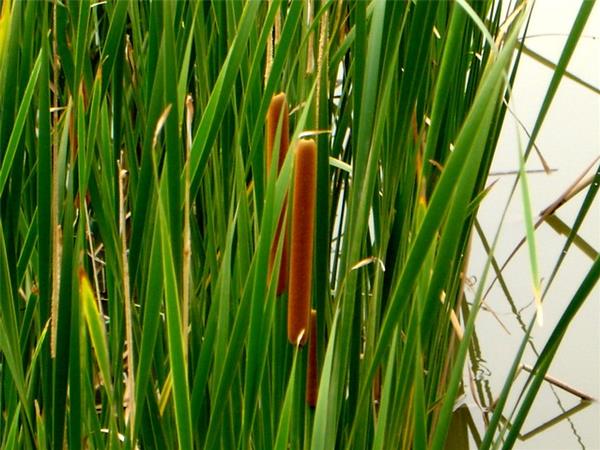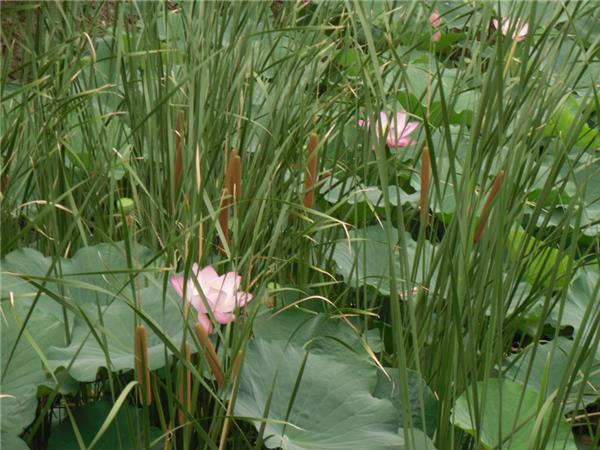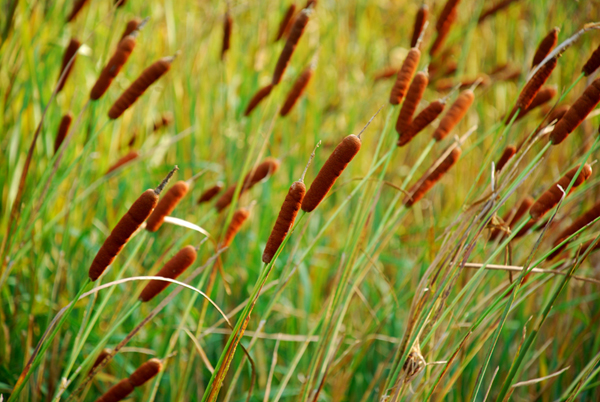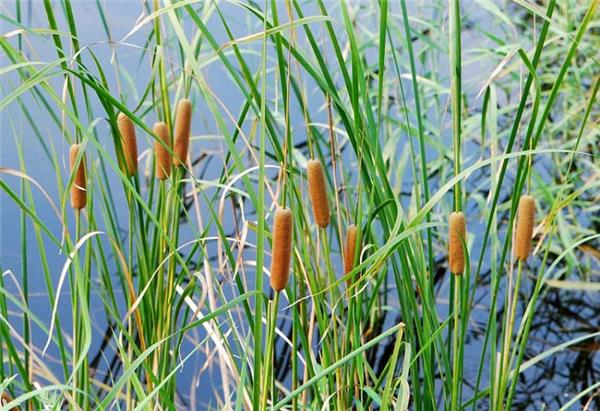A plant cattail that can't grow without water.
Cattail is a kind of flower with ornamental value, medicinal value and economic value at the same time. It used to grow in the wild, but now it can also be cultivated indoors by potted plants.

Introduction of cattail
Morphological features: perennial perennial root Tishui marsh herbs. Rhizome white, long and transverse. Stem Terete, erect, hard and solid. The leaves are flat and banded, more than 1m long, smooth and glabrous, with a long sheath clasping stem at the base. Flowers unisexual, fleshy spikes terminal cylindrical, candle-like, flowers small grayish brown.
Ecological habits: like a warm, sunny environment; extensive management.
Garden uses: decorate garden pools, lakesides, flower borders, potted plants.
Species identification: the differences between Typhus and Gladiolus are as follows: the fleshy spikes of Typhus are grayish brown, growing in the middle and upper part of the plant; the leaves are slender and without middle ribs; Gladiolus has obvious leaflike spawn, fleshy inflorescences yellowish green, born at the base of the plant; the leaves are slightly wider and have middle ribs.
Main value: high economic value, pollen is used as medicine; leaves are used for weaving, papermaking, etc.; the base of young leaves and the apex of rhizome can be used as vegetables; female inflorescences can be used as pillow core and cushion fillings, which is one of the important aquatic economic plants.

Culture methods of cattail
1. Asexual reproduction was used in the cultivation of cattail. Before planting, the seedlings with thick pseudo-stem, wide leaves, green and glossy green, robust growth and partial roots and rhizomes were selected from Putian as seedlings. The row spacing of planted plants is 50 × 50 m or 65 × 65 m. When planting, the shallow water layer should be planted deeply, so that all the roots of the seedlings should be buried in the soil; if the water layer is deep, the holes should be dug to help the seedlings stabilize the roots, but the seedling leaves should come out of the water, otherwise the seedlings will suffocate due to lack of oxygen. Keeping the shallow water layer in Putian after planting is beneficial to the germination and ramet of Putian.
two。 Cattail is an aquatic crop, so the cultivation of cattail is inseparable from water, and its water demand in the whole growth process is very large. So choosing a place with enough water when growing cattails is the first important thing to grow cattails.
3. After planting cattail, we should pay attention to the maintenance in shallow water, often clean up the weeds and properly add fertilizer in the growth period of cattail has a very good effect on the growth of cattail and a lot of flowers, so every step and detail of planting cattail can not be ignored.

4. Cattail itself is extremely demanding in terms of water and temperature, so usually when the temperature reaches 20 ℃, then cattail is very easy to survive and this environment makes the cattail grow quite fast, which will make the leaves of cattail wider and more shiny in color, and grow better. Cattail is very sensitive to temperature, so its whole growth period includes three different periods: sprouting, ramet and flowering, and the temperature needs to be controlled.
5. When the growth of most plants stops, the leaves are dark green and healthy, and the tissue has been enriched, it is the right time for harvest. Harvesting too early or too late will affect the quality of Puye, which is disadvantageous to the knitting process. In order to facilitate the regeneration of persistent roots, harvest should be carried out on sunny days and when there is no dew on the plant, and the harvest height should be in accordance with the requirements of leaving most of the pseudostems. In the first year, the yield of newly planted Putian is 1500-2250 kg per hectare, which can be doubled in the second year and reach a maximum of about 5300-6000 kg in the third year. After that, due to the aging of pu plant year by year and the decline of soil fertility, the yield also decreased year by year, and should be renewed in the fifth or sixth year.

The plant type of cattail is tall and straight and unique, with a very different ornamental effect. If you are interested in it and want to make more warm and moist friends at home, you can choose to raise some aquatic plants. Calamus is a good choice.
Related
- Wuhan Hospital Iron Tree Blooming Result Was Instantly Frightened by the Gardener Master
- Which variety of camellia is the most fragrant and best? Which one do you like best?
- What is the small blue coat, the breeding methods and matters needing attention of the succulent plant
- Dormancy time and maintenance management of succulent plants during dormancy
- Minas succulent how to raise, Minas succulent plant pictures
- What are the varieties of winter succulent plants
- How to raise succulent plants in twelve rolls? let's take a look at some experience of breeding twelve rolls.
- Attention should be paid to water control for succulent plants during dormant period (winter and summer)
- Watering experience of twelve rolls of succulent plants
- Techniques for fertilizing succulent plants. An article will let you know how to fertilize succulent plants.



